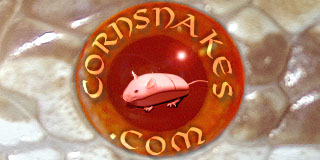What you have is an Elaphe guttata guttata (a corn snake), and it is amelanistic. Amelanistic (amel) is simply a terem from the Greek language that means "no black pigment." We just don't call them "missing black" like you all apparently do in the Netherlands.
Other Greek origin words are:
anerythristic -- "no red pigment"
hypomelanisitc -- "reduced black pigment"
xanthic -- "yellow pigment"
axanthic -- "no yellow pigment"
These last two are not used to describe actual corn morphs as of yet, but they are used quite a bit with other species.
Hope this helps, and nice amel you have there!
